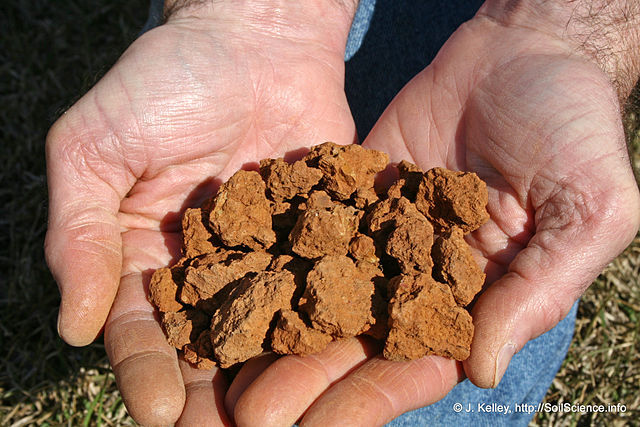High clay and silt Content
The soil has high clay content and silt content and a high plasticity limit. Therefore, if soil is used as an alternative to sand, it will not not bond well with the cement matrix and results in weaker concrete. This is the main reason why engineers do not use soil as an alternative to sand to prepare concrete.

Undesirable substances
In addition to silica, soils contain many undesirable substances such as sulfates, chlorides and salts, which can cause corrosion in steel and concrete over a long period of time.
Weak bond between Aggregate and Cement Matrix
Due to the cohesive property, the clay coats the outer surface of cement, sand and aggregate and results in weak bond between cement and aggregates. This results in the reduction of compressive strength and stripping of aggregate from the concrete.
High Void Content
Because the size of cohesive clays is much smaller than that of sand, they have a larger surface area and the higher the void content (air content). This lower the strength of the concrete because the strength of the concrete is directly proportional to the amount of air content in it. if the air content of concrete is increases by 1%, the strength of concrete decreases by 8%.
High Shrinkage and Swelling
Due to their size, cohesiveness and absorption properties, soils have high shrinkage and swelling (bulking) during wetting and drying, which causes swelling and shrinkage in concrete.
High Organic Content
Organic content in clay has the problem of decomposing over time, so using those soil with high clay content will reduce the strength of the concrete.
So can soil be used as an alternative to sand?
Well, pessimistic times require pessimistic actions. However, before using soil as an alternative to sand or as an alternative to fine aggregate, extensive research should be conducted on the various properties of the material. Some important tests to be performed are liquid limit test, plastic limit test, sieve analysis test and shrinkage test.
The sieve analysis test helps to classify the soil based on the particle size, which can be used to determine the percentage of clay and sediment content in the soil. It is better not to use soil for constructing buildings if the silt content in soil is more than 20%.
Leave a Reply